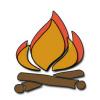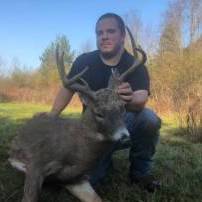-
Similar Content
-
By Lawdwaz
Email that came last night from our friend and staunch promoter of dove hunting in New York State, Mike Rossi:
"On January 3rd Senator O'Mara introduced a Senate version of the dove bill, S07202. It was also co-sponsored by Senator Seward and Senator Ranzenhofer.
In the next week or two be sure to call Governor Cuomo's office and ask him to take executive action on this bill during this year's budget.
If the governor does not take executive action then it's going to be very important for the next 6 months, up until early June, if necessary, that everybody calls every member of the legislature multiple times. We basically have until June to get this done.
I asked that Fred Neff verifies this, but I'm pretty sure that this is the first time in New York's history that there was a dove Bill sponsored in both Chambers? "
How about this, all you bird dog owners here in NY just might get a dove hunting season yet. I'll have to rethink my position on getting another lab if this happens!! (it'll be a yellow though as I think they can take the heat better than a black!)
-
By NYHuntFish
The American Indian Museum in lower Manhattan (always free admission btw) has these decoys from like Jesus' time.
-
By HuntingNY
Waterfowl Hunting Seasons Provide Diverse Opportunities across the State
New York State Department of Environmental Conservation (DEC) Acting Commissioner Marc Gerstman today announced that information is now available about the upcoming waterfowl hunting seasons, including season dates and updated regulations.
“New York’s unique configuration of waterfowl management zones provides hunters with open seasons in various parts of the state from September to April,” said Acting Commissioner Gerstman. “This year’s season selections were developed by a team of statewide DEC biologists, with input from waterfowl hunters. DEC has looked to task forces to help select waterfowl hunting season dates for more than a decade and appreciates all the help they have offered to help make these selections.”
The season dates and regulations can be viewed in full detail on the DEC website at http://www.dec.ny.gov/outdoor/28503.html. Waterfowl hunting zone descriptions and boundaries are available at www.dec.ny.gov/outdoor/28497.html.
Duck Season Overview:
Most duck season dates are similar to last year, but there are some changes to daily bag limits. The daily limit for canvasbacks has been increased from one bird per day to two based on above average breeding population and nesting conditions this spring. In contrast, the daily bag limits for sea ducks (eiders, scoter and long-tailed ducks) have been reduced from seven to six in the Special Sea Duck area on Long Island, with species restrictions of no more than four eiders, four scoters, or four long-tailed ducks. In addition, the bonus daily bag limit for sea ducks has been eliminated in the Special Sea Duck zone; sea ducks count as part of the regular daily duck limit in all areas of the state. Further restrictions to sea duck season length and bag limits are expected in the fall 2016. Possession limits for all ducks are three times the daily bag limit.
Duck hunting seasons begin with designated youth waterfowl hunts in each zone of the state. These youth hunts are for junior hunters (12 to 15 years of age) accompanied by a licensed adult hunter (including current Harvest Information Program (HIP) registration and duck stamp – see below). The adult should not possess a firearm while accompanying a youth who is hunting ducks on any of these days. The daily bag limit for ducks and brant during the youth hunts is the same as during the regular season and three per day for geese. The youth hunts are held on weekends in each zone of the state, as follows:
Northeastern Zone – September 19-20
Lake Champlain Zone – September 26-27
Southeastern Zone – September 19-20
Western Zone – October 3-4
Long Island Zone – November 14-15
Goose and Brant Season Overview:
September Canada goose seasons begin September 1 throughout upstate New York, and on September 8 for central and eastern Long Island, and hunters can look forward to another 50 days or more (depending on area) to pursue these popular game birds during the fall and winter. Resident geese remain abundant in many areas of the state with the population estimated to be approximately 240,000 birds statewide, and migratory populations that pass through New York were estimated to be similar to recent years. Hunters are reminded that Canada goose seasons are set for different geographic areas of the state than other waterfowl seasons, so be sure to review the maps and season dates closely at: www.dec.ny.gov/outdoor/28496.html. Canada goose season dates and bag limits in most areas are similar to last year.
A special conservation season for snow geese, in addition to the regular hunting seasons in each zone, will be open in all of upstate New York fromJanuary 16 through April 15. These birds have become so abundant that they are causing harm to wetland habitats throughout their range. Special seasons have been established in many eastern states and provinces to increase hunter harvest and help reduce this population. The daily limit for snow geese is 25 per day, and there is no possession limit. Electronic calls and shotguns capable of holding more than three shells may be used to take snow geese at any time when all other waterfowl hunting seasons are closed.
The daily bag limit for Atlantic brant has decreased from two to one bird per day due to three consecutive years of poor productivity and decreasing population trends; however, the season length remains unchanged at 30 days.
Federal Duck Stamp and State Migratory Bird Harvest Information Program:
Hunters 16 or older must have a 2015 federal duck stamp to hunt during any of the 2015-16 seasons. This year’s stamp features a pair of ruddy ducks painted by New York artist, Jennifer Miller of Olean. The federal duck stamp cost increased from $15 to $25 this year, the first price increase for the stamp in 24 years. The United State Fish and Wildlife Service establishes the cost of the duck stamp. They are available at most post offices, some sporting goods stores, by calling toll-free 1-800-852-4897, or at http://www.fws.gov/birds/get-involved/duck-stamp/buy-duck-stamp.php. Ninety-eight percent of the proceeds from the duck stamp go toward migratory bird conservation and habitat acquisition. Stamps must be signed across the face by the hunter before they become valid for hunting, but they do not have to be attached to the hunting license.
All migratory game bird (waterfowl, woodcock, snipe, rails and gallinules) hunters, including junior hunters (age 12-15), must register with New York's Migratory Bird Harvest Information Program (HIP) prior to hunting in any of the 2015-16 seasons. Hunters must register every year and for each state in which they plan to hunt migratory game birds, and also must carry proof of compliance whenever going afield. To register in HIP, call toll-free 1-888-427-5447 (1-888-4 ASK HIP) or visit www.NY-HIP.com.
Hunting Safety:
Acting Commissioner Gerstman reminded hunters to follow simple safety guidelines and to use good judgment when choosing a time and place to hunt. Being considerate of other people enjoying the outdoors or who live nearby can help avoid potential conflicts and ensure a safe and enjoyable season. As coastal areas become more populated, new landowners unfamiliar with the safety, ethics and traditions of waterfowl hunting sometimes respond by seeking to limit hunter access to popular waterfowl hunting areas. Hunters should be considerate and try to minimize disturbance of local residents whenever possible. More information about avoiding conflicts between waterfowl hunters and waterfront property owners can be found atwww.dec.ny.gov/outdoor/94213.html.
Waterfowl Consumption Advisory:
The New York State Department of Health (DOH) evaluates data on chemicals in wild waterfowl to assess the possible effects of those chemicals on human health. The current advisory states that: "Mergansers are the most heavily contaminated waterfowl species and should not be eaten. Eat up to two meals per month of other wild waterfowl; you should skin them and remove all fat before cooking, and discard stuffing after cooking. Wood ducks and Canada geese are less contaminated than other wild waterfowl species and diving ducks are more contaminated than dabbler ducks.
Recent data indicate that waterfowl residing in the Hudson River between Hudson Falls and Troy have higher PCB levels than waterfowl from other portions of the Hudson River and are likely to have higher PCB levels than waterfowl from other areas of the state. To help reduce PCB exposures, you may want to harvest your waterfowl from other locations on the Hudson River or in other areas of New York State, particularly during the early season when many of the available birds are likely to be resident waterfowl (i.e., non-migratory). Because PCBs may have a greater effect on young children or an unborn child, it is particularly important for women under 50 and children under 15 to minimize their PCB exposures.
For the latest DOH advice on consumption of waterfowl or other game, please visit the Department of Health website at: www.health.ny.gov/environmental/outdoors/fish/health_advisories/advice_on_eating_game.htm.
Status of Highly Pathogenic Avian Influenza in NY Wild Birds:
To date, highly pathogenic avian influenza, which is of great concern to poultry producers across North America has not been found in wild birds in New York State. DEC and USDA staff will sample wild waterfowl this fall and winter in a continued monitoring program. Hunters are advised to practice good hygiene and take necessary precautions to minimize risks to themselves and their hunting dogs, such as: wear rubber gloves when cleaning game; wash hands with soap and water after handling game; disinfect utensils used to clean game; and dispose of carcasses in areas where domestic poultry will not come in contact with the remains. More information can be found at: www.aphis.usda.gov/publications/animal_health/2015/fsc_hpai_hunters.pdf
Habitat Stamp:
Acting Commissioner Gerstman also encouraged all outdoor enthusiasts to consider purchasing a Habitat/Access Stamp, an optional stamp that helps support DEC's efforts to conserve habitat and increase public access for fish and wildlife-related recreation. Buying a $5 stamp is a way to help conserve New York's fabulous wildlife heritage. More information about purchasing a Habitat Stamp is available at www.dec.ny.gov/permits/329.html.
For More Information:
New York’s 2015-2016 Waterfowl Hunting Seasons and Regulations brochure is available now on the DEC website and will be available from most license-issuing agents and DEC regional offices by early September.
For more information about waterfowl hunting in New York, including public hunting areas around the state, go to www.dec.ny.gov/outdoor/28175.html or contact any DEC wildlife office. Contact information for all regional offices can be found on the DEC website www.dec.ny.gov/about/558.html.
This post has been promoted to an article
-
By mike rossi
Long Island Youth Waterfowl Program
http://www.dec.ny.gov/press/93612.html
For Release: Wednesday, October 2, 2013
DEC Announces 16th Annual Youth Waterfowl Program
Instructional Class and Youth Waterfowl Days Set for Nov. 2, 9 & 10
The New York State Department of Environmental Conservation is holding its 16th Annual Youth Waterfowl Program, open to young hunters on Long Island ages 12 to 15, on November 2 and November 9 - 10, Commissioner Joe Martens announced today. The program is a collaboration with the New York Conservation Officers Association; Suffolk County Department of Parks, Recreation and Conservation; Shikar Safari Club International; Ducks Unlimited; and South Shore Waterfowlers Association.
The Youth Waterfowl Program, an instructional course, is set for November 2. Youth Waterfowl Days, which are specially designated hunting days, are set for November 9 - 10.
The Youth Waterfowl Program is a special event to help junior hunters prepare for and participate in the Youth Waterfowl Days. The program includes instruction in:
Hunting ethics and regulations Waterfowl identification Firearms safety review Retriever and decoy use Cold water survival and boating safety Trap shooting Certified sportsman education instructors, as well as DEC environmental conservation officers (ECOs), will guide participants through the program and help youth hunters become part of the long tradition of waterfowl hunting on Long Island. All new applicants must attend an instructional day at Hubbard County Park in Flanders on November 2 which will qualify them for the option of hunting at Hubbard County Park in Flanders or Southaven County Park in Yaphank on November 9 and anywhere hunting is allowed on November 10.
Participants must be 12 to 15 years of age by November 9, have completed a hunter education course by November 2, possess a junior (small game) hunting license by November 9 and be registered with the Harvest Information Program (HIP).
For further information regarding the Youth Waterfowl Program or to sign up for the November 2 instructional class, please contact DEC Region 1 Sportsman Education Program at (631) 444-0255 or e-mail [email protected]. For more information on the Youth Waterfowl hunt, visit the DEC website .
Applications for the Youth Waterfowl Program are due by Oct. 11.
About Youth Waterfowl Days:
Each year, two days are set outside the regular duck hunting season in each waterfowl zone to allow any junior hunter to hunt ducks and geese. On these Youth Waterfowl Days, junior hunters (ages 12 to 15) must be accompanied by a licensed adult hunter. Adults cannot hunt during these two days.
The 16th Annual Youth Waterfowl Program is a part of Governor Andrew M. Cuomo's NY Open for Hunting and Fishing Initiative; an effort to improve recreational activities for in-state and out-of-state sportsmen and sportswomen and to boost tourism opportunities throughout the state. Under this initiative, New York is streamlining the purchase of hunting and fishing licensing and reducing license fees, improving fishing access at various sites across the state, stocking as much as 900,000 pounds of fish, expanding fishing clinics and increasing hunting opportunities in various regions. The reduced fees become effective February 1, 2014.
-
By BuckinDucks
IM CURRENTLY STATIONED IN NORTH CAROLINA IN THE ARMY, BUT WILL BE RE-LOCATING TO WEST POINT. IM ORGINALLY FROM CALIFORNIA AND USE TO HUNTING SHALLOW FLOODED RICE FIELDS. I DONT KNOW ANYBODY IN NY. ANYTHING WOULD HELP. I HAVE ALL THE EQUIPMENT( EXCEPT DECOYS) AND I HAVE A 4 MONTH OLD BLACK LAB THAT IM WANTING TO TRAIN.THANKS!
-
-
Recently Browsing 0 members
No registered users viewing this page.








Recommended Posts
Join the conversation
You can post now and register later. If you have an account, sign in now to post with your account.